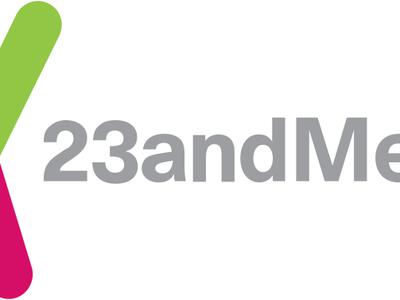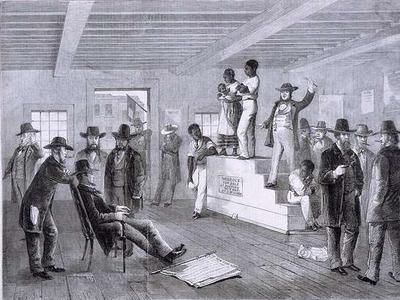In an online debate someone asked “Should home economics become a required class?” The response was pretty clear with 81% of the debaters saying that it should and only 19% arguing against (debate.org). Home economics used to be a part of any standard high school students schedule. However, it is becoming rarer to see a student take a Home Economics course. It is also becoming increasingly common to hear young women and men say that they feel unprepared for life after high-school. Home Economic classes should be made available to American high school student’s education because they will learn life skills that they will later use in their daily lives and future careers, it will also help bring down the obesity rates, and the rate of greenhouse gas emissions in the United States.
Although the term “Home economics” was not widely used until the early 20th century, the formalization of teaching domestic science dates as far back as the mid 1800’s. This was due to the availability and affordability of materials to print, it was also due in large part to the growing literacy among the middle and lower class people (Martin Heggestad). An early example of this is the “Treatise on Domestic Economy for The Use of Young Ladies at Home.” by Catherine Beecher. In it she covers the topics of healthful food, healthful drink, clothing, early rising, giving to charity, searching, sewing, domestic amusements and social duties. Her book has even been called the first American published guide to housekeeping. Catherine Beecher argued for the importance of domestic life and applied scientific principles to things such as “child-bearing, cooking, housekeeping, and for the liberal education of women (“Beecher's Domestic Treatise”).
A major part of the “Domestic Sciences” (as they were then called) becoming a class that colleges mandated was the Murril Act of 1862. The act gave colleges land in each state with part of the requirements being that schools increase the variety of courses that they taught their students. Up until to that point, colleges only taught the classics such as literature and latin and they focused on preparing young men for professions in the fields of medicine, law and ministry. The Murril Act however, stipulated that colleges had to add courses in mechanics and agriculture. Since America was still then a largely agrarian country (a country whose economy depended on producing and maintaining crops) women who were the wives of farmers were encouraged to attend school and learn about the scientific theories behind their work. However, it was only state schools that offered this to women, as private universities still did not allow them to attend their institutions. The things that the farmers’ wives learned about were things such as cooking, house cleaning, sewing, laundry, caring for the sick, and sanitation. These courses became known as the Domestic Sciences. (Martin, Heggestad)
When the “Domestic Sciences” started to become a part of high school curriculums, the name “Home Economics” was adopted. It was a broader term that included nutrition, food preparation, parenting, early childhood education, family economics, human development, and interior design. At the time that Home Economics was first being introduced to school curriculums, the legislature and educators were unsure of what the goal of this field would be. Some argued that the class should focus on career exploration and on teaching young men domestic skills. Others wanted to reinforce the traditional domestic roles of a man and woman within a family structure. Nevertheless the result was women getting exposed to various careers and some of them even went into fields such as research and teaching. (Cornell)
However, despite home economics big growth in the 1950’s a survey conducted between 2010 and 2012 demonstrated that only 3,427,601 students took Home Economic courses such as Family and Consumer Sciences. This showed a decline in enrollment in Home Economic courses, from when the Family and Consumer sciences were first taught. Data was collected on the number of students enrolled in the courses and the number of teachers teaching it. The data showed that between 1915 and 1959 the number of young people taking the courses rose from 17% to about 50%. This was the last federal report for Family and Consumer Science. The next data to be collected on Family and Consumer science was done by the National Coalition for Family and Consumer Sciences Education in 2006. This coalition was made up of representatives from the American Association of Family and Consumer Sciences, the Association of Career and Technical Education, as well as the Family and Consumer Sciences Education Association. When they compared the results of their survey with the one done in 1959, they found that the percentage of students taking the course were similar, with the exception of greater gender equity. The survey done in 2012 and 2013 was conducted to determine the number of students enrolled in the courses, the percentage participation of both genders, number of teachers, the change in the last 10 years, and to see which states offered FCS. The results showed that the numbers had decreased by 38% in the last 10 years (Carol Werhan). The survey also found that although many states still offered Home Economic classes, the decline could be due to the focus on core academic courses. Not only are schools today putting more focus on core classes like writing and English, which, although necessary, do not allow ample time for other types of classes; these classes are also seen as old fashioned since they used to be partly used to reinforce traditional gender roles.
Another way that the absence of Home Economic classes is noticeable is by comparing previous generations who had these classes to the generations of today. Due to the increased focus on academic courses the number of millennials passing AP exams is four times greater than in the past decade. However, this higher focus on academics has led to a decrease in focus on life skills. Most millennials do not know how to check their tire pressure, and only half have read their car manual. Another important skill that has decreased is cooking. Today, 78% of millennials buy ready made meals instead of cooking, in comparison to previous generations of whom only 68% purchased ready made meals. (Neil Howe)
All this data reveals the importance of Home Economic classes . The skills that are taught in these classes are very valuable, especially with a prominent and urgent health problem of which we have seen an alarming rise: obesity. According to the National Institute of Health, obesity refers to an excess amount of body fat. This is a problem that has risen drastically over the years. More than 2 in 3 adults are considered to be obese. One-third of children and adolescents (ages 6-19) are considered to be overweight or obese. Obesity leads to various other health problems such as type two diabetes, high blood pressure, heart disease, and even some types of cancer (“Overweight & Obesity Statistics.” ). Unfortunately obesity not only leads to physical health problem but to psychological problems as well. People who are overweight are regarded as “lazy, unsuccessful, and weak-willed” by others. This results in a bias which leads to them being treated negatively, and sometimes even physically and verbally assaulted. These incidents leads into low self esteem, depression, lower success rates economically, and can even result in self harm or suicide (Angelina Sutin). A more common problem for the younger generation is bullying. With the increase in technology, bullying has been harder to control and to trace back to the responsible party which only increases the amount of bullying going on. Students who are bullied are more apt to miss school which has a negative effect on their academics, this leads to them not getting into higher education institutions and later, job opportunities. This all relates to home economics because the causes of obesity include income, life habits, and eating habits. In home economic classes, students learn to manage their income, learn how to establish good lifestyle habits, and learn about proper nutrition. The availability of Home Economic courses would lead to a decrease in both adult and child obesity because the group of students who take these courses will grow up knowing about good nutrition, and then use that knowledge when they have their own children. Once a generation is well educated on these skills the next will be less likely to lack the skills that their parents did because they grew up in an environment where the skills were used everyday.
Not only is obesity a physical and psychological problem to many Americans, but some new research has shown that obesity could be contributing to the amount of greenhouse gasses in the atmosphere. Since obese people weigh more it takes more energy when they use transportation such as cars, and as of 2015, transportation accounts for 27 percent of greenhouse gas emissions. The results show that in a population of 1 billion, obesity could increase the greenhouse gas emissions by 1 billion metric tons of CO2 equivalent. This is due to the fact that overweight people consume 8% more food than people with a healthy weight (J. Squalli). The consumption of more products leads to the production of them. The high productions of these items leads to more Greenhouse gas emissions into the atmosphere which amounts to 21% of greenhouse gas emissions.. Especially when the products in question are livestock such as cattle or sheep, they are responsible for 9% of greenhouse gas emissions.(“Sources of Greenhouse Gas Emissions”)
The availability of Home Economic courses would also allow students to have exposure to different careers. In fact there is a shortage of skilled trade workers. Joshua Wright, the director of a labor market analytics firm, writes that “...the hardest segment of the workforce for employers to staff with skilled talent hasn’t been registered nurses or engineers or even web developers. It’s been the skilled trades – the welders, electricians, machinists, etc. that are so prevalent in manufacturing and construction.” (Joshua Wright). This is due to the focus on S.T.E.M (science, technology, engineering and mathematics) curriculum. Students have not had the chance to view other types of careers because they have not had exposure to them. The chart below includes data collected in nationally.
The older generations have a greater number of people who work in skilled trades. In contrast the younger generation has only a 46.1% of people with skilled trade jobs (Joshua Wright). This is because they have had less exposure to these jobs. This means that the demand in this labor force is only growing. Home Economic courses would introduce students to jobs they might not have considered because they did not know about them, after all S.T.E.M careers are not for everyone, and skilled trade jobs are essential.
Many have heard of the freshman 15, a humorous term that makes a reference the weight gain that college students acquire when they become freshman in college. This has long been attributed to their newfound “freedom” from the decision of their parents. They are finally able to make their own choice on food and on their finances. But what if the freshman 15 are actually partially related to the students lack of nutritional education? This information could be learned in a Home Economics course in high school, since it would help students establish good eating habits that they could utilize in college. Not only would college students learn how to manage their diets in high school, they would also learn how to manage their money. The skills taught in Home Economic would greatly benefit college students especially, because a survey conducted in 2014 showed that college students are managing their own money at a higher rate compared to past years. However they are, at the same time, becoming less financially responsible. They have more credit cards, but not enough literacy ability to be able to manage their banking, savings, credit cards and student loans (Neil Howe).This a very important issue because the mistakes they make financially can follow them for the rest of their lives and affect financial choices they might want to make in the future. If these college students had taken Home Economic courses in high school they would be better prepared to manage their lives once they start to live on their own.
I believe that in order to correctly integrate home economic classes into the modern curriculum some aspects of the class would have to be changed. It would need to teach activities that would be useful to both and not put them in confined roles of housewife and working husband. It should teach not only the traditional skills of sewing, cooking and household care but also nutritional information, and necessary skills such as managing a bank account and proper car care. Another adjustment to the home economic curriculum should be to add things such as the proper use of technology in finance, which was not taught in the 1950’s when Home Economics was first introduced, but is now vital to our way of life. Realistically, Home Economic classes would not work as a required class to graduate because large high schools would have a lot of difficulties in ensuring that all students were able to take it. The classes should be available for students to take, they should at least have the option made available to them, and encouraged because of the helpful skills they provide students with. The courses should be broken down into semester classes, this would allow students to take various classes. Another reason for the classes to be broken down is because it allows students to learn one skill really well because the focus of the class would be on that one skill rather than on a range of skills. This would be especially helpful in encouraging students to take the courses because it would allow them to choose which individual skills they want to develop and not take classes that teach skills they already know, or do not want to learn about.
Home Economic courses, such as the Family and Consumer Sciences or Financial Management should be available to high school students because the classes teach life skills that students will use later in their daily lives, as well as provide different options for future careers. It would reduce the overweight rates in America which lead to other health problems such as body dysmorphia, bullying and death. In addition it would reduce greenhouse gas emissions because by teaching students how to maintain healthy diets, they would be less likely to be overweight. If less people are overweight, there is a lower demand for food, which reduces the amount of greenhouse gas emissions rates produced during the making and transportation of food. It is very important that students have access to Home Economic courses because then they would be prepared for their future and the future of the United States as a society and a country.
Works Cited
“Beechers Domestic Economy.” Beechers Domestic Economy, utc.iath.virginia.edu/sentimnt/snesceba1t.html. Accessed 31 May 2017.
Gortmaker, PhD Steven L. “Reducing Obesity via a School-Based Interdisciplinary Intervention Among Youth.” Archives of Pediatrics & Adolescent Medicine, American Medical Association, 1 Apr. 1999, jamanetwork.com/journals/jamapediatrics/fullarticle/346206. Accessed 31 May 2017.
Heggestad, Martin . “Home Economics Archive: Research, Tradition and History.” Home Economics Archive: Research, Tradition and History (HEARTH), Cornell , hearth.library.cornell.edu/h/hearth/about.html. Accessed 31 May 2017.
“Home Economics Archive: Research, Tradition and History (HEARTH).” Home Economics Archive: Research, Tradition and History (HEARTH), Cornell University , hearth.library.cornell.edu/. Accessed 30 May 2017.
Howe, Neil. “Millennials Struggle to Pass Life Skills 101.” Forbes, Forbes Magazine, 1 Sept. 2014, www.forbes.com/sites/neilhowe/2014/07/02/millennials-struggle-to-pass-life-skills-101/. Accessed May 31 2017.
“Overweight & Obesity Statistics.” National Institute of Diabetes and Digestive and Kidney Diseases, U.S. Department of Health and Human Services, 1 Oct. 2012, www.niddk.nih.gov/health-information/health-statistics/overweight-obesity. Accessed 31 May 2017.
Skaggs, Bethany Latham. “Cornell University Library Witchcraft Collection2006168Cornell University Library Witchcraft Collection. Ithaca, NY: Cornell University Library Last visited: October 2005.
“Should home economics become a required class?” Debate.org, www.debate.org/opinions/should-home-economics-become-a-required-class. Accessed 31 May 2017.
“Sources of Greenhouse Gas Emissions.” EPA, Environmental Protection Agency, 14 Apr. 2017, www.epa.gov/ghgemissions/sources-greenhouse-gas-emissions. Accessed 31 May 2017.
Sutin, Angelina R., and Antonio Terracciano. “Perceived Weight Discrimination and Obesity.” PLOS ONE, Public Library of Science, journals.plos.org/plosone/article?id=10.1371%2Fjournal.pone.0070048. Accessed 2 June 2017.
Squalli, J. “The environmental impact of obesity: longitudinal evidence from the United States.” Chemeketa Library Database Proxy, www.sciencedirect.com.proxy.chemeketa.edu:2048/science/article/pii/S0033350617301622. Accessed 30 May 2017.
Werhan, Carol R. "Family and Consumer Sciences Secondary School Programs: National Survey Shows Continued Demand for FCS Teachers." Journal of Family & Consumer Sciences 105.4 (2013): 41-45. Web. 5 May 2017.
Wright, Joshua. “Americas Skilled Trades Dilemma: Shortages Loom As Most-In-Demand Group Of Workers Ages.” Forbes, Forbes Magazine, 23 May 2014, www.forbes.com/sites/emsi/2013/03/07/americas-skilled-trades-dilemma-shortages-loom-as-most-in-demand-group-of-workers-ages/#3f72e02f6397. Accessed 31 May 2017.


















